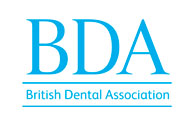Dental implants are the gold standard for replacing one or more missing teeth
Dental Implants look, feel & function just like your own teeth and are a long-lasting solution to tooth loss , suitable for most patients.
Do you have a missing tooth? Do you feel uncomfortable speaking, laughing and eating in public? Do you wear dentures and find them an uncomfortable experience? Then dental implants may be the solution you have been looking for.
The gold standard for replacing missing teeth; dental implants will help you to smile, eat and speak with confidence again.
What is a dental implant?
Dental implants offer patients an attractive, strong and undetectable solution for missing teeth and are often the ideal choice for creating a natural and confident smile.
Single missing tooth
Smile, eat and speak with confidence; a single dental implant is the ideal solution for a missing tooth
Multiple missing teeth
Tooth loss not only affects the food choices you make and the way you eat but it can also impact your speech and alter your appearance.
Secure a denture
Dentures are often used for people who have lost multiple teeth or an entire arch of teeth.
Full arch implants
Losing your teeth is a difficult experience, especially if it means losing all of your upper or lower teeth over a period of time or all at once after planned extractions.
Digital dentistry & dental implants
Dental implants are considered the most advanced way to replace missing teeth and are the closest restoration science has produced to replicate natural teeth.
What is a dental implant?
An implant is a titanium screw-shaped attachment made from titanium that is inserted into the jawbone to replace the root portion of a missing natural tooth. It is screwed into a pre-drilled socket in the bone, and then acts to support a crown or bridge, or secure a denture into place.
It integrates readily with the bone by a process called osseointegration, after which time the crown, bridge or denture can be placed onto an abutment that is fixed into the top of the implant.
What does the treatment process involve and how long will it take?
Routine dental implants are placed in the following process:
1. Assessment and treatment planning – a thorough examination and discussion will lead to a treatment plan being formulated, including covering all other options available to replace the missing teeth. Then a written plan and cost estimate will be provided.
2. Implant placement – this is the surgical procedure to place the implant into the bone in the desired position. It is carried out using local anaesthetic to ensure no discomfort is experienced.
3. Healing period – this is to allow the implant to integrate successfully and firmly with the bone. In most cases this takes about 8 weeks but will depend on individual circumstances.
4. Restoration phase – this is the placement of the crown, bridge or denture onto the implants once healing is complete.
5. Maintenance – good oral hygiene is important for preserving implants, and patients also need to regularly attend for review appointments following completion of treatment.
Routine treatment usually takes about 12 weeks to complete, but more complex cases can take longer. The expected duration of any treatment will be fully explained in the written plan.
How many teeth can be replaced by implants?
Dental implants can either replace single missing teeth using implant-supported crowns, or multiple teeth using implant-supported bridges or dentures. All the teeth
can be replaced by a removable denture, which is firmly anchored onto implants and can be removed for cleaning, or implant-retained fixed bridgework which cannot be removed from the mouth.
What are the benefits of dental implants?
They act to replace natural teeth both aesthetically and functionally as closely as possible, without damaging other healthy teeth. They can replace a single tooth, multiple missing teeth, or a removable denture with fixed teeth or act to secure a denture into place, giving patients more confidence.
Who is suitable for dental implants?
They can be used on any adult at any age as long as jaw growth is complete. The basic requirements for treatment include a good general state of health, good oral hygiene and adequate bone quantity and quality. Some patients may have existing conditions that can adversely influence the success of any implant treatment, including smoking and periodontitis (gum disease).
Will I be left without teeth during treatment?
There are a number of methods that can be used to replace teeth during treatment. These include providing a removable acrylic denture or a fixed adhesive bridge. To ensure they do not apply potentially damaging pressure to the underlying implants during the healing phase, these prostheses often have to be adjusted at regular intervals during treatment.
Is it uncomfortable when the implants are placed?
The dental implant is inserted into the bone under local anaesthetic so that there is no discomfort during treatment. Painkillers and antibiotics are given before treatment and provided afterwards, although there is usually very little discomfort after surgery. There will also often be some swelling and bruising, but this will usually subside within 2 weeks of the surgery.
How do I look after the implants?
Keeping the implants clean during and after treatment is very important. Instructions will be given and techniques demonstrated to enable thorough cleaning before, during and after treatment. You will need different cleaning aids and regular review appointments to ensure you are maintaining good oral hygiene.
Who will check my implants once treatment is completed?
It is important to continue to see your own dentist for regular check-ups to monitor and maintain your dental health and hygiene. Regular review appointments will be made to continually assess the status of your dental implant.
How is the bone assessed and what happens if not enough is present?
Assessment of the quality, quantity and location of available bone is usually carried out by visual and physical examination, specific dental radiographs (x-rays) to provide a two-dimensional image, and study models of the teeth. However, sometimes these processes do not provide enough information and a three dimensional image is required using a CBCT scan.
If not enough bone is present then a number of options are available to try and provide extra bone. This can be collected from a number of different areas in the mouth. Alternatively a technique called guided bone regeneration (GBR) may be suitable. This uses artificial bone and membrane to serve as a template and aid bone formation in the required area.
If there is not enough bone present in the premolar and molar regions of the upper jaw, then it may be possible to make room using a sinus lift procedure. A sinus is an air-filled cavity on either side of your nose, and this can be accessed by a surgical procedure inside the mouth, and bone or bone substitute added to make more room for implants to be placed.
What other options are there for replacing missing teeth?
Missing teeth can also be replaced by using fixed bridges or removable dentures without implants. Each option depends on the number and location of teeth that are absent.
Fixed conventional bridges without implants are supported by natural teeth either side of a gap. These supporting teeth have to be filed down. Crowns are created for these prepared teeth, with a false tooth attached between the crowns and the bridge is then cemented on. These bridges can be used to replace more than one missing tooth, but may then require support from more natural teeth.
Fixed resin-bonded bridges consist of a metal framework with wings on one or both sides that are bonded onto the back of the existing teeth, with the false teeth also bonded onto this metal structure. The supporting teeth therefore do not need to be filed down and only require minimal preparation. However, the bridge is only as strong as the bond created, and may not be so successful in areas of the mouth with high biting forces.
Both of these bridge types can have a number of different designs, including being used as a cantilever, where only one tooth acts to support the false tooth.
Where there are a larger number or all of the teeth are missing, removable dentures can be used to replace them. These can be made of acrylic or be metal-based. They can use clasps or retainers to gain support from any remaining teeth.











